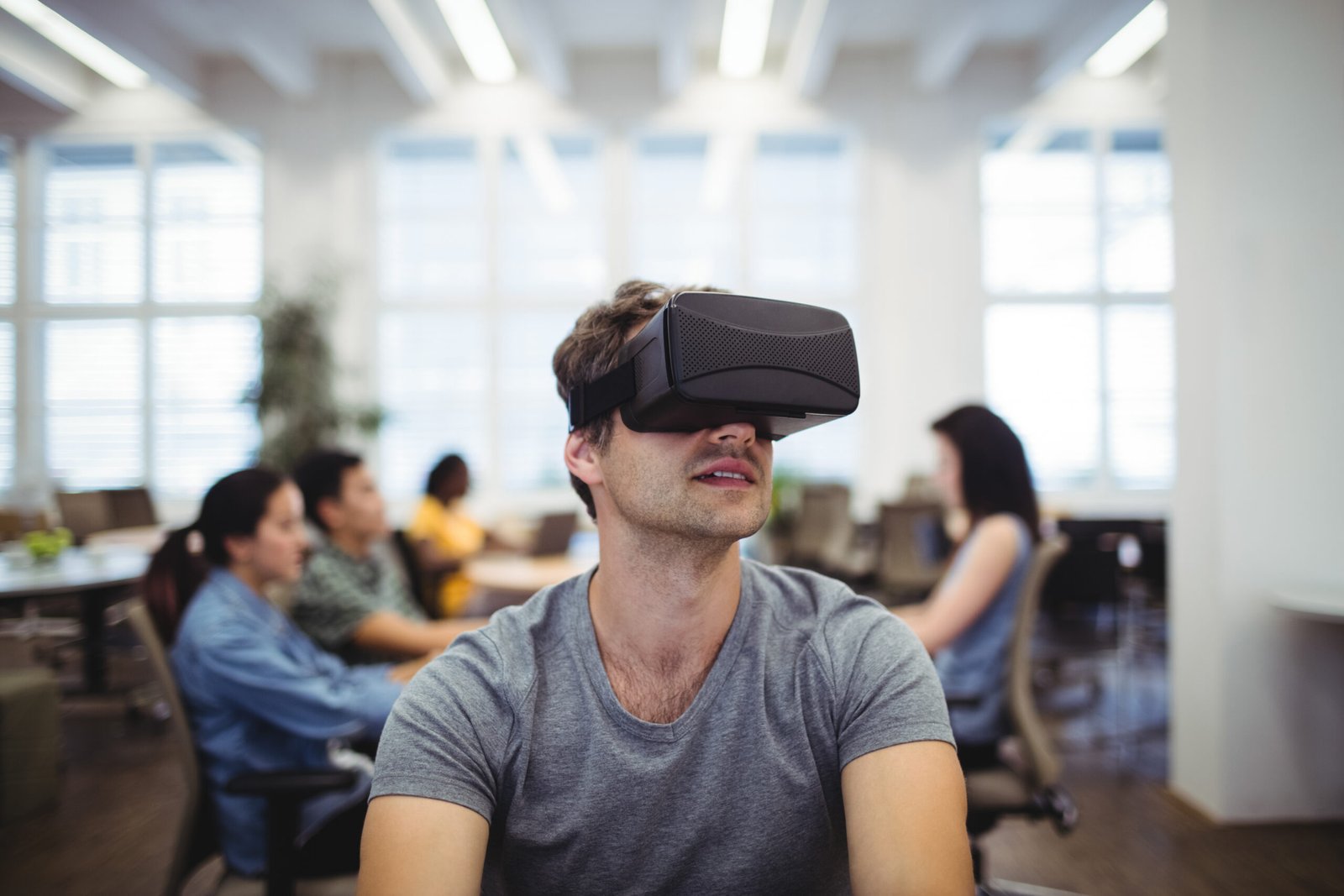The Evolution of Corporate Training
Corporate training has been transformed over decades from classroom-based instruction and printed manuals to digital e-learning platforms and gamified applications. Companies are now using virtual reality in corporate training, which provides learners with insights that traditional classes cannot offer.
Leading companies from different industries, including retail banking, healthcare, and manufacturing, use VR training tools to put their staff members in virtual work settings that mirror reality. Businesses now approach virtual simulations for skill development in new and different ways to train their employees.
Why Virtual Reality is Transforming Corporate Training
VR technology builds training spaces that let employees learn by doing instead of watching. Live practical training helps employees remember information better than in classrooms. High-risk sectors such as manufacturing, healthcare, and energy use VR platforms to let trainees practice without facing workplace dangers, speeding up their learning process.
Multinational companies can use VR to deliver uniform training experiences worldwide because the technology provides consistent training quality no matter what resources are available in each location. VR training systems provide high ROI by lowering travel expenses and cutting instructor and facility needs.
Industry Applications: How Companies Use VR in Training
Retail & Luxury
Retail businesses use VR technology to set up virtual stores where employees learn to handle customers better while solving problems and displaying product displays. LVMH uses immersive learning for businesses to show staff members their brand history and product production methods through immersive virtual experiences.
Banking & Insurance
Financial institutions use VR technology to train staff members by having them identify fraudulent activities and transaction patterns in virtual training sessions. Bank of America and Wells Fargo teach their staff about customer interaction through virtual training platforms and AI-based avatar systems showing different kinds of customer problems.
Manufacturing & Pharmaceuticals
Manufacturing companies train their staff to operate equipment through virtual reality because this method lets workers practice without risking production or endangering their safety. Pharmaceutical leader Pfizer uses virtual labs for their researchers to practice scientific work and team collaboration from different locations.
Healthcare & NGOs
Doctors receive better surgical training using VR because they can perform realistic practices on virtual patient images. Nursing students use VR technology to develop their patient assessment abilities and react to medical emergencies. NGOs use VR technology to help their staff understand the everyday lives of people they assist through realistic virtual experiences.
Regional Governments & Food Industry
Public organisations use VR systems to practice emergency plans against natural disasters such as earthquakes and floods. Food industry leaders train their staff in VR systems to help employees spot workplace risks and learn correct product handling steps in virtual environments.
Benefits of VR-Based Corporate Training
VR works best because it uses all learning methods simultaneously. Learning by seeing, hearing, and physically doing leads to more substantial results than only observing. The success of VR training for employee development depends on its built-in game elements, which boost user engagement and completion numbers.
Workers use the technology from separate locations to join training sessions in one virtual space. New employees learn skills more quickly through VR training, which decreases their productivity lag during their initial period. Cost-effective corporate training with VR now lets organisations measure employee performance data to see where team members need learning and create unique learning paths.
Challenges & Considerations for VR Adoption in Training
The cost of setting up VR systems includes buying hardware, developing VR applications, and creating training materials. Organisations must win over their staff who do not understand virtual reality technology. Integrating VR into current learning management systems creates technical problems.
Creating VR-powered employee onboarding through VR training materials requires specific knowledge in instructional design, 3D modelling, and interactive programming, which most corporate learning teams lack. Organisations organisations regularly work to maintain and update their VR content.
The Future of VR in Corporate Learning
Next-generation VR learning tools use artificial intelligence to design education programs that adapt to users based on their performance and preferred learning methods. The future of workplace training with VR looks bright. Organisations will use virtual campuses to let employees learn new skills while working with colleagues through metaverse technology development.
Haptic technology development will help trainees experience real object sensations during training sessions. The future system updates will make movement tracking and arm gestures seem more natural so staff can work better in virtual and standard settings.
Conclusion
AI and VR in professional training stand out as the most significant upgrades to corporate training systems in the last several decades. They let people learn important job-relevant valuable relationship skills. Organisations that use corporate training with VR technology and VR for leadership and soft skills training will create better employees faster at lower expense. VR technology will become a necessary part of talent development strategies for all industries.
